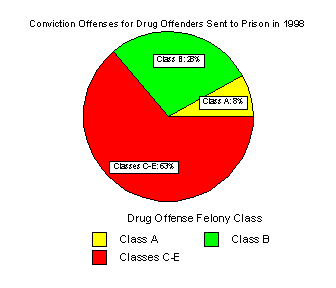OUTLOOK FOR THE BILL: As of right now, it is projected that there is a 36% chance of this bill being enacted.
Only about 21% of bills that made it past committee in 2013–2015 were enacted.
Factors considered:
- The sponsor is the chairman of a committee to which the bill has been referred.
- A cosponsor is the ranking member of a committee to which the bill has been referred.
- The sponsor is in the majority party and at least one third of the bill's cosponsors are from the minority party.
- At least two cosponsors serve on a committee to which the bill has been referred.
- The bill was referred to Senate Judiciary.
The bill would only apply to federal prisons, which currently hold about 205,000 people, a fraction of the approximately 2.4 million who are incarcerated across the country. Still, passage of this bill could provide a momentum boost for reform advocates and spur states to look at similar legislation, and this needs to be done to avoid wasting future tax dollars.
Bipartisan support
While other sentencing reform bills have been submitted in Congress in the past, this is the first to have the backing of Senate Judiciary Committee Chairman Chuck Grassley (R-IA), a longtime hardliner on criminal justice policy and an opponent of previous efforts. The bill has to be approved by Grassley’s committee before it can reach the Senate floor, so his backing is essential for the advancement of sentencing reforms in this session of Congress.
In addition to Grassley, the Senate bill is co-sponsored by Judiciary Committee Ranking Member Pat Leahy (D-VT) and 10 other influential Democrats and Republicans. In the House the bill is sponsored by Judiciary Committee Chairman Bob Goodlatte (R-VA), Ranking Member John Conyers (D-MI), and 16 other co-sponsors from both parties. The backing of both judiciary committee chairmen means that these bills have a very good chance of getting considered in both the Senate and the House.
Changes to mandatory sentences
Under the bills, the mandatory sentences that are currently issued under the federal “three strikes” law for people convicted of three drug-related crimes would be reduced from a life sentence to a mandatory minimum of 25 years. The mandatory minimum sentence for a second drug conviction would also be reduced from 20 years to 15 years. In many cases these changes would apply retroactively to currently incarcerated inmates. Judges would also get more discretion to issue sentences below the statutory minimums for defendants who have not been involved in violent crimes, have not been known to possess firearms, and are not part of a “continuing criminal enterprise.”
The bills would also retroactively reduce sentences for inmates who were sentenced under the exceedingly harsh guidelines for crack possession that were required by federal law until 2011. From 1994 to 2011, a person possessing just five5 grams of crack was considered a felon, while a person found with powdered cocaine would have to have 100 grams in their possession for a similar conviction. In 2011 Congress increased the amount of crack required for a similar future convictions to 28 grams, and this bill would apply that change to people convicted of crack possession prior to 2011 as well. The statutory maximum sentence for unlawful possession of a firearm by a convicted felon would be increased under the bills from 10 years to 15 years.
Differences between the House and Senate bills
The Senate version also contains a range of provision that are not in the House version. For example, it would establish new mandatory minimums for crimes related to domestic violence that would range from 10 years to life imprisonment depending on the seriousness of the crime. It would also create a new mandatory minimum of 5 years for people convicted of providing certain “controlled good or services” to groups and individuals designated as terrorists or any person affiliated with a program to develop weapons of mass destruction.
Other unique provisions in the Senate version include a recidivism reduction program that inmates could participate in in exchange for small reductions to their sentence, limitations on solitary confinement for juveniles, “compassionate release” of some non-violent elderly offenders, and a “prerelease custody” program that would allow inmates to spend some time in a reentry program before being fully released from the system.



